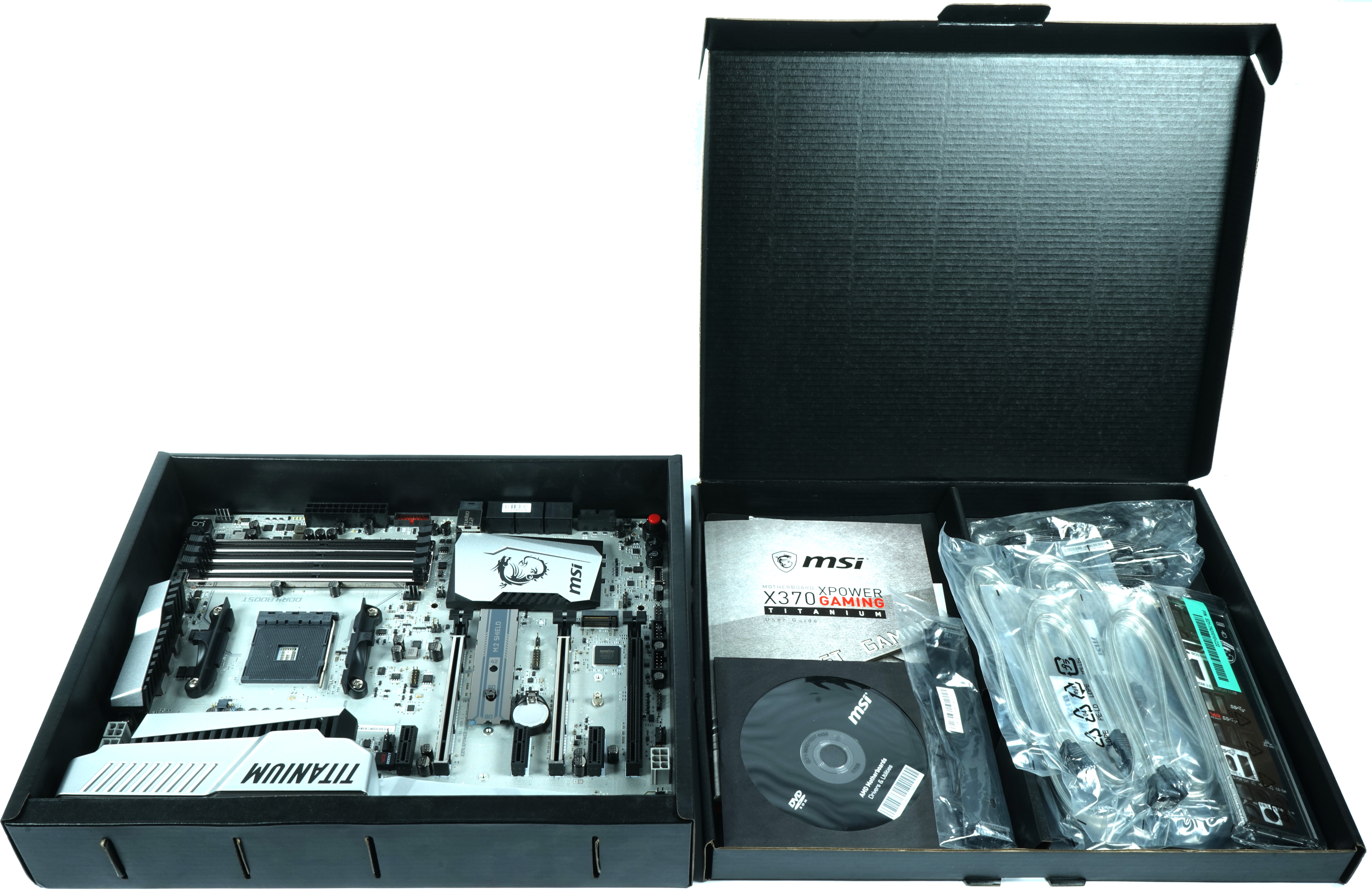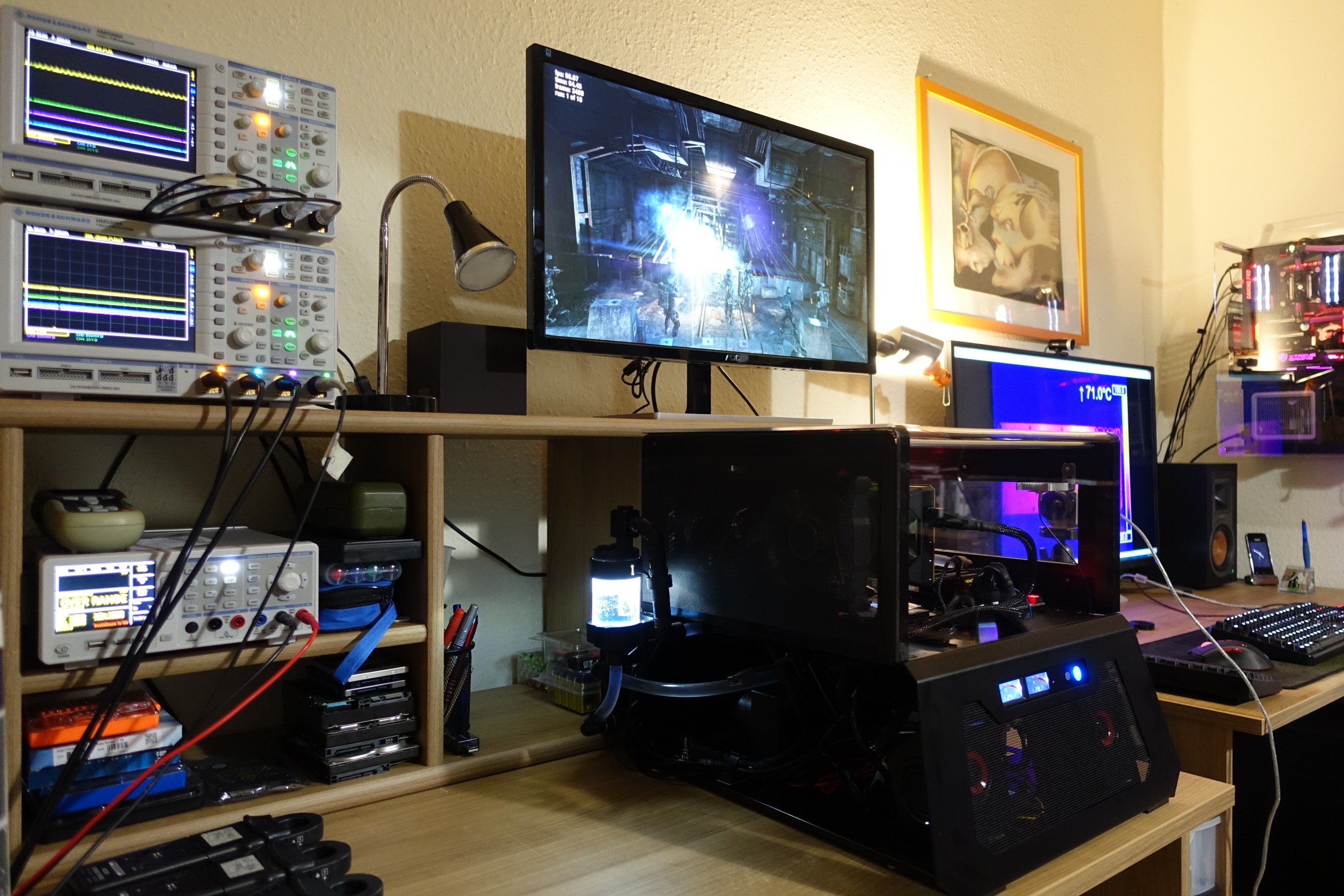AMD Ryzen 7 1700X Review
Why you can trust Tom's Hardware
Overclocking And Test Setup
Overclocking
You can download AMD's Ryzen Master utility from the company's website. The tool makes overclocking from within Windows nice and convenient. However, we still prefer making firmware-based adjustments.
Our 1800X hit 4 GHz at 1.425V across all of its cores in our launch article, but we stepped that back to a more conservative 3.9 GHz overclock in this piece to represent a safer long-term frequency. We achieved Prime95 stability on both the 1800X and 1700X by dialing core voltage up to 1.3875V and bumping CPU SoC voltage to 1.2V. We left Load Line Calibration set to Auto, but boosted the Crucial LPX memory modules to DDR4-2933 for our overclocked setups. That's only a slight increase over the DDR4-2699 we used for the stock gaming configurations.
While we've seen many enthusiasts hit 4.0-4.1 GHz with much higher voltages, AMD says 1.35V is the "safe" ceiling for long-term overclocking. We didn't run into any thermal issues at 3.9 GHz, and recorded 70°C (per AIDA) after a two-hour Prime95 run with the capable Noctua NH-U12S SE-AM4 heat sink in place. Waste heat appears to accumulate quickly at higher clock rates (we hit 82°C at 4 GHz using Corsair's H100i v2). Invest in a beefy cooler if you plan on pushing the limits of Ryzen's frequency headroom.
Test Setup
We've experienced general platform instability with numerous AM4-based motherboards and early firmware revisions. This is typically pinned on unoptimized AMD Generic Encapsulated Software Architecture microcode. AGESA is a bootstrap protocol that initializes processor cores, memory, and the HyperTransport (now Infinity Fabric) controller. We're using Asus' Crosshair VI Hero for this round of testing, along with the latest 1001 firmware. This version demonstrated improved stability at stock and overclocked settings. We'll continue to monitor the firmware updates from other vendors and note when they've achieved a similar degree of stability. AMD is expected to release an AGESA revision in late March that should enhance memory support, including opening up more sub-timings.
Early firmware updates yielded large performance increases over AMD's original press kit. As time goes on, though, the gains get smaller and smaller. Asus mentioned that we shouldn't expect big changes from future builds.
In general, we've recorded more performance variation from Ryzen processors than we're accustomed to in a few games. Ashes of the Singularity is one example. Incidentally, that's also a title expected to improve once the developer follows up on promises to optimize for AMD's architecture. We suspect that some of this inconsistency stems from the impact of cross-CCX thread migration and other peculiarities of Zen. In response, we've disabled several transitory background services that fire up with little to no provocation and may promote thread migration, such as Windows Search and Defender. Frequent reboots during testing also helped weed out obvious outliers, yielding more consistent results. We're again testing under Windows' High performance power plan with HPET disabled. As we demonstrated in our Ryzen 7 1800X review, some games benefit from disabling SMT, though that also leads to lower performance in other titles. Plus, we don't think you should be expected to toggle this feature on and off. As such, we're leaving SMT enabled for today's story.
As expected, we also encounter graphics bottlenecks in several titles at 2560x1440. AMD argues that its Ryzen processors fare best at higher resolutions, for obvious reasons: as you start shifting the burden to your GPU, host processing weaknesses are easier to mask. Further, outside of one exception in Middle-earth: Shadow of Mordor, we only recorded minor hierarchy changes between FHD and QHD in our Ryzen Versus Core i7 in 11 Popular Games article. In other words, the same performance trends at 1920x1080 carry over to 2560x1440.
Get Tom's Hardware's best news and in-depth reviews, straight to your inbox.
For this piece, we split testing between our German and American labs. The team in the U.S. ran the gaming benchmarks, while the Germans measured performance in HPC and workstation apps, and then collected thermal/power data. They used MSI's X370 XPower Gaming Titanium motherboard and we went with Asus' Crosshair VI Hero and an EVGA GeForce GTX 1080 FE. We stuck with AMD’s recommended presets for our stock configurations to minimize issues attributable to the dissimilar boards.
If you want to know more about how the Tom's Hardware DE system looks and is controlled, check out How We Test Graphics Cards.
| Test Systems and Measurement Setups | |
|---|---|
| Systems | Germany AMD 1Ryzen 7 1800X, 1700XMSI X370 XPower Gaming Titanium2x Corsair Vengeance LPX DDR4-3000 @2666 MT/sIntel LGA 2011-v3 Intel Core i7-6900K MSI X99S XPower Gaming Titanium 4 x 4GB Crucial Ballistix DDR4 2400Intel LGA 1151 Intel Core i7-7700K MSI Z270 Gaming 7 2 x 8GB Corsair Vengeance DDR4-3200 @2400 MT/sAMD Socket AM3+ FX-9590 Asus Crosshair V Formula 2 x 8GB Corsair Dominator DDR3 2133 @1866 MT/sGermany All1x 1TB Toshiba OCZ RD400 (M.2, System SSD)2x 960GB Toshiba OCZ TR150 (Storage, Images)be quiet Dark Power Pro 11, 850WWindows 10 Pro (All Updates)US AMD 1Ryzen 7 1800X, 1700XAsus ROG Crosshair VI Hero2x Corsair Vengeance LPX DDR4-3000 @2666 MT/sUS AMD 2AMD FX-8350MSI 970 Gaming2x Kingston HyperX DDR3-2133USA Intel 1Intel Core i7-7700KMSI Z270 Gaming M72x Corsair Vengeance LPX DDR4-3000 @2400 MT/sUSA Intel 2Core i7-6900KASRock X99 Extreme44x Crucial DDR4-2400US All1TB Samsung PM863SilverStone ST1500, 1500WWindows 10 Pro (All Updates) Version 1607 |
| Cooling | Germany- Alphacool Eispumpe VPP755 Pump - Alphacool NexXxoS UT60 Full Copper 240mm- Alphacool Eisblock XPX CPU-Alphacool Cape Corp Coolplex Pro 10 LT- 5x be quiet! Silent Wings 3 PWM- Thermal Grizzly Kryonaut US-Corsair H100iv2-Noctua NH-U12S SE-AM4-Arctic MX-4 |
| Case | Lian Li PC-T70 with Expansion Kit and Mods |
| Power Consumption Measurements | - Contact-free DC Measurement at PCIe Slot (Using a Riser Card) - Contact-free DC Measurement at External Auxiliary Power Supply Cable - Direct Voltage Measurement at Power Supply- 2 x Rohde & Schwarz HMO 3054, 500MHz Digital Multi-Channel Oscilloscope with Storage Function - 4 x Rohde & Schwarz HZO50 Current Probe (1mA - 30A, 100kHz, DC) - 4 x Rohde & Schwarz HZ355 (10:1 Probes, 500MHz) - 1 x Rohde & Schwarz HMC 8012 Digital Multimeter with Storage Function |
| Thermal Measurements | - 1 x Optris PI640 80Hz Infrared Camera- PI Connect Analysis Software with Profiles |
| Noise Measurements | - NTI Audio M2211 (with Calibration File)- Steinberg UR12 (with Phantom Power for Microphones)- Creative X7, Smaart v.7- Custom-Made Proprietary Measurement Chamber, 3.5 x 1.8 x 2.2m (L x D x H)- Perpendicular to Center of Noise Source(s), Measurement Distance of 50cm- Noise Level in dB(A) (Slow), Real-time Frequency Analyzer (RTA) - Graphical Frequency Spectrum of Noise |
Current page: Overclocking And Test Setup
Prev Page Introduction Next Page 3DMark, Ashes of the Singularity, Battlefield 1 & 4
Paul Alcorn is the Editor-in-Chief for Tom's Hardware US. He also writes news and reviews on CPUs, storage, and enterprise hardware.
-
Ergosum Whoever runs PR at AMD needs to reevaluate their methods. The 1800's and 1700's are very solid products, but for some reason were shadow marketed--letting rumor define the target application sets.Reply
AMD should have had a strong positive campaign on where these chips do well. Specific. Timely. They would have gathered some gamers who wanted to brag about handbrake performance or some-such. Instead they let the market build fairy castles in the sky about gaming-specific performance, and so (again) lost a great deal of goodwill and trust. -
hannibal The problem is that the market made those cloud castless, not the AMD... it is hard to AMD to say users not to speculate. Every information that AMD did give out was confirming that Ryzen was going to be really good multicore performer, and we all know that very few game use more that teo or three threats, so the extra 4-6 cores that Ryzen has normally Are useless I. The games, so any Intel 2-4 core prosessor wa going to better in the games if They would run in higher freguences that Ryzen and AMD very clearly tell us that 3.8 was the very near the top of the prosessor speed.Reply
If and when games start supporting 8 cores the 1700 is super good perfomer in the games too, but if and most propably because the situation stays the same. 2-4 more powerfull cores is always better in games that having more of them.
It seems that people now know games really poorly if They expected the Ryzen has any chance in those.
Ryzen 1500 (four cores) is as fast in the games than 1800X is and 1500 is much cheaper.
http://www.techspot.com/review/1360-amd-ryzen-5-1600x-1500x-gaming/ -
TechyInAZ Good review. Can't wait until software devs and motherboard manufactuer's get better optimized softwares and BIOS's so Ryzen isn't constantly dealing with this problem anymore.Reply -
dstarr3 Reply19481950 said:Conclusion: Ryzen still sucks.
It's not that Ryzen sucks, it's that Ryzen was meant to compete with Xeon CPUs, which it does very well. Gamers should look elsewhere, but for some reason, gamers are the ones that got most excited about these CPUs. -
elbert I wouldn't suggest either a 1070 nor the 1080 on 1080p. Probably should have tested with a more normal 1060 6GB at that resolution. Those willing to pay high prices for both the CPU and GPU should be running at 1440p. The game benchmarks are unnaturally skewed.Reply
The biggest thing to look at in the game benchmarks is how unutilized the Ryzen CPU's are. We will probably see the Ryzen R5 quads running the same FPS for a few hundered less then all but the old 8350 on April the 11th.
Also it looks like AMD is gearing up a new socket with 8, 12, and 16 cores on an X390 motherboard. At the current pricing the 16 core could be lower priced than Intel's over priced 6900 8 core. -
Achaios ?ll this talk about games supporting more than 4 cores is really a COMPLETE WASTE OF TIME.Reply
46.19% of Steam Gamers own 2-Core CPU's and 47.74% of Steam Gamers own 4 Core CPUs. No Game Studio is going to waste resources and money on optimizing games for more than 4 cores in the foreseeable future, if ever.
According to the same survey, only 0.24% of gamers own octacore CPU's. A little less than this is the presence of AMD Ryzen CPU's in the gaming market. Almost nonexistent.
I wish I was trolling. -
Oranthal Why did you only test 1080p performance? Most people who would consider these CPUs run an RX-480 or greater GPU if they are gaming ($300+ is still the premium market). Other reviews show the gaps shrinking or disappearing with greater resolutions as the bottlenecks are at the GPU where most die-hard review reading gamers will actually be limited.Reply -
Oranthal Reply19482020 said:I wouldn't suggest either a 1070 nor the 1080 on 1080p. Probably should have tested with a more normal 1060 6GB at that resolution. Those willing to pay high prices for both the CPU and GPU should be running at 1440p. The game benchmarks are unnaturally skewed.
The biggest thing to look at in the game benchmarks is how unutilized the Ryzen CPU's are. We will probably see the Ryzen R5 quads running the same FPS for a few hundered less then all but the old 8350 on April the 11th.
Also it looks like AMD is gearing up a new socket with 8, 12, and 16 cores on an X390 motherboard. At the current pricing the 16 core could be lower priced than Intel's over priced 6900 8 core.
100% spot on. I would of skipped my comment had I seen this when I started writing it.

